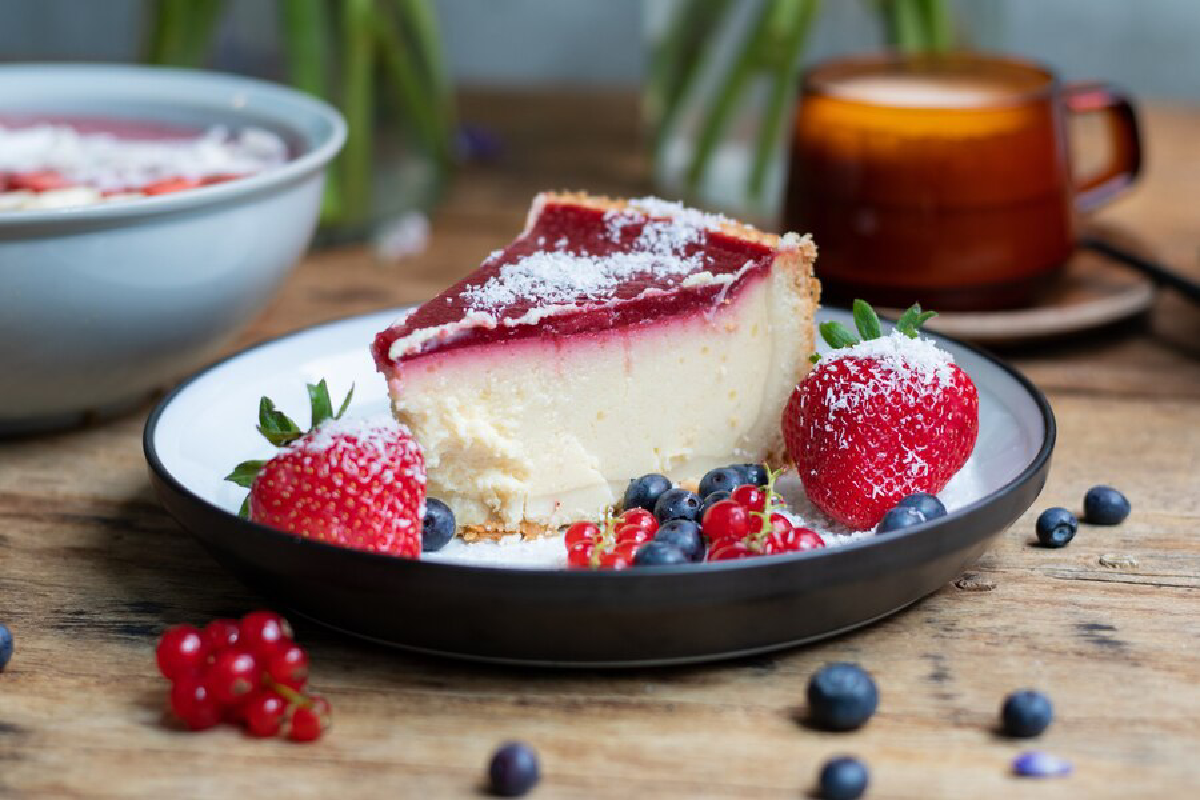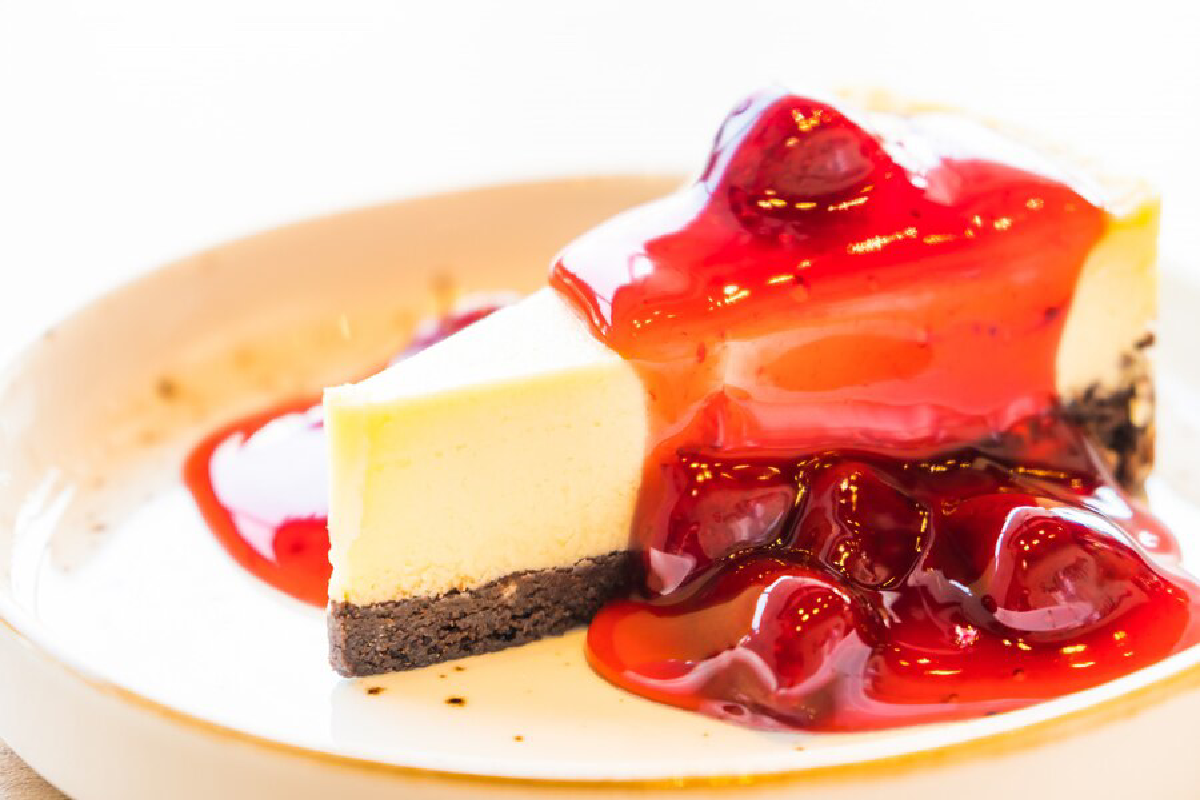What Are the Two Styles of Cheesecake? A Comprehensive Guide</h1> <p>Delving into the world of cheesecakes, one often encounters a delicious dilemma: the choice between the dense and creamy New York-style cheesecake and the light, airy Italian-style cheesecake. This guide aims to provide a thorough exploration of these two distinct styles, New York vs Italian Cheesecake, highlighting their unique characteristics and flavors. Whether you’re a fan of the rich, indulgent texture of New York cheesecake or the delicate, fluffy nature of its Italian counterpart, understanding these styles is key to appreciating and mastering this beloved dessert.

Overview of Cheesecake Styles
Baked Cheesecake
Baked cheesecake is the traditional style of cheesecake. It is made with a dense and creamy cheese filling that is baked in a crust. The crust is usually made with graham crackers, but it can also be made with other types of cookies or pastry. The filling is made with cream cheese, sugar, eggs, and vanilla extract. Baked cheesecake has a rich, smooth texture and a slightly tangy flavor. It is typically served chilled and topped with fruit, whipped cream, or chocolate sauce.
No-Bake Cheesecake
No-bake cheesecake is a newer style of cheesecake that does not require baking. It is made with a similar filling as baked cheesecake, but it is set in the refrigerator instead of the oven. No-bake cheesecake is lighter and fluffier than baked cheesecake, and it has a mousse-like texture. The crust for no-bake cheesecake is usually made with crushed cookies or graham crackers mixed with melted butter. No-bake cheesecake is often topped with fresh fruit or a fruit sauce.
Overall, both styles of cheesecake are delicious and have their own unique characteristics. Baked cheesecake is denser and richer, while no-bake cheesecake is lighter and fluffier. The choice between the two styles ultimately comes down to personal preference.
Historical Origins
Cheesecake has been around for centuries, and its origins can be traced back to Ancient Greece. The Greeks are believed to have served cheesecake to athletes during the first Olympic games in 776 BC. The recipe was simple, consisting of cheese, honey, and wheat.
Ancient Greece
Cheesecake was considered a delicacy in Ancient Greece and was often served at weddings and other celebrations. The Greeks believed that cheesecake had medicinal properties and could be used to cure a variety of ailments. They also believed that the gods enjoyed cheesecake and would often offer it as a sacrifice.
Modern Evolution
Over time, cheesecake evolved into two distinct styles: New York-style and Italian-style. New York-style cheesecake is dense and creamy, made with cream cheese, eggs, and sugar. It is often served with a graham cracker crust and topped with fruit or whipped cream.
Italian-style cheesecake, on the other hand, is lighter and fluffier, made with ricotta cheese and eggs. It is often served with a pastry crust and flavored with lemon or orange zest.
Today, cheesecake is a popular dessert around the world and can be found in many different variations. From classic New York-style to Japanese-style souffle cheesecake, there is a cheesecake to suit every taste.
Baked Cheesecake Characteristics
Texture
Baked cheesecake has a dense and creamy texture, with a slightly grainy mouthfeel due to the presence of cheese curds. The texture is often described as being more solid than its no-bake counterpart, with a firmer and smoother consistency.
Cooking Technique
As the name suggests, baked cheesecake is cooked in the oven. The cheesecake mixture is poured into a crust and baked until set. The baking process helps to set the cheesecake and give it a slightly caramelized flavor.
Common Ingredients
Baked cheesecake typically contains cream cheese, sugar, eggs, and vanilla extract. Some recipes may also include sour cream, lemon juice, or heavy cream. The crust is usually made from crushed graham crackers, cookies, or pastry.
Baked cheesecake is a classic dessert that is enjoyed by many. Its dense and creamy texture, caramelized flavor, and variety of ingredients make it a versatile dessert that can be enjoyed in many different ways.

No-Bake Cheesecake Characteristics
Texture
No-bake cheesecake is known for its creamy and smooth texture. Unlike baked cheesecake, it does not have a dense or heavy texture. The texture of no-bake cheesecake is more like a mousse or pudding.
Preparation Method
As the name suggests, no-bake cheesecake does not require baking. The crust is usually made from crushed cookies or graham crackers mixed with melted butter and pressed into a pan. The filling is made from cream cheese, whipped cream, and sweetener. Gelatin is often added to help the cheesecake set. The mixture is then poured into the crust and chilled in the refrigerator for several hours or overnight.
Common Ingredients
No-bake cheesecake typically includes cream cheese, whipped cream, sweetener, and gelatin. The crust can be made from various types of cookies or graham crackers. Other ingredients such as fruit, chocolate, or caramel can also be added to the filling for additional flavor and texture.
Overall, no-bake cheesecake is a delicious and easy-to-make dessert that is perfect for any occasion. Its creamy texture and versatile flavor make it a popular choice for many dessert lovers.
Regional Variations
New York-Style Cheesecake
New York-Style Cheesecake is one of the most popular types of cheesecake. It is characterized by its dense, creamy, and smooth texture. The crust is usually made of graham crackers or digestive biscuits, and the filling is made of cream cheese, eggs, and sugar. New York-Style Cheesecake is often served with fruit compote or whipped cream.
Italian Cheesecake
Italian Cheesecake is known for its light and fluffy texture. It is made with ricotta cheese, which gives it a distinct flavor and texture. Italian Cheesecake is often flavored with lemon zest or vanilla extract and is served with fresh fruit or a dusting of powdered sugar.
Japanese Cheesecake
Japanese Cheesecake is a popular dessert in Japan. It is known for its light and fluffy texture and is often described as a cross between a sponge cake and a cheesecake. Japanese Cheesecake is made with cream cheese, eggs, sugar, and cornstarch, which gives it its unique texture. It is often served with fruit or a dusting of powdered sugar.
Regional variations of cheesecake offer a unique twist on the classic dessert. Whether you prefer the dense and creamy texture of New York-Style Cheesecake, the light and fluffy texture of Italian Cheesecake, or the unique texture of Japanese Cheesecake, there is a type of cheesecake for everyone.
Serving and Presentation
Toppings and Sauces
Cheesecake can be served with a variety of toppings and sauces to enhance its flavor and presentation. Some popular options include fresh fruit, chocolate sauce, caramel sauce, whipped cream, and chopped nuts. These toppings can be drizzled over the top of the cheesecake or served on the side for guests to add themselves. It is important to choose toppings that complement the flavor of the cheesecake and do not overpower it.
Serving Temperature
Cheesecake can be served either chilled or at room temperature, depending on personal preference. Chilling the cheesecake can help it set and make it easier to slice, while serving it at room temperature can bring out the flavors and textures. It is recommended to chill the cheesecake for at least 2 hours before serving, but it can also be left in the fridge overnight. When serving, it is important to let the cheesecake sit at room temperature for 10-15 minutes before slicing to ensure it is not too hard.
To add an extra touch of presentation, cheesecake can be served on a decorative platter or cake stand. A dusting of powdered sugar or cocoa powder can also add a nice finishing touch. By paying attention to the toppings, serving temperature, and presentation, cheesecake can be transformed into a beautiful and delicious dessert that is sure to impress guests.
Dietary Adaptations
Vegan Cheesecake
For those who follow a vegan diet, traditional cheesecake is off-limits due to the use of cream cheese and eggs. However, there are several adaptations that can be made to create a delicious vegan cheesecake. One option is to use a vegan cream cheese substitute made from tofu or nuts. This can be combined with a vegan egg substitute, such as aquafaba (the liquid from a can of chickpeas), to create a creamy texture. Sweeteners like maple syrup or agave can be used instead of honey or sugar.
Another option is to use a cashew-based filling, which can be blended with coconut cream and flavored with vanilla or other extracts. This creates a rich and creamy texture that is similar to traditional cheesecake. Vegan cheesecake crusts can be made using crushed nuts, dates, or gluten-free cookies.
Gluten-Free Options
For those with celiac disease or gluten intolerance, traditional cheesecake crusts made with graham crackers or cookies are not an option. However, there are several gluten-free alternatives that can be used. One option is to use a crust made from ground nuts, such as almonds or pecans, mixed with a gluten-free flour blend. This creates a crunchy and flavorful crust that is gluten-free.
Another option is to use a gluten-free cookie, such as a ginger snap or shortbread, for the crust. These cookies can be crushed and mixed with melted butter or a dairy-free alternative to create a delicious crust. It is important to ensure that all ingredients used in the cheesecake, including any flavorings or toppings, are also gluten-free.
By making these adaptations, individuals with dietary restrictions can still enjoy the delicious flavors and textures of cheesecake.
Pairing with Beverages
Coffee
Cheesecake is a rich and creamy dessert that pairs well with a strong cup of coffee. The bitterness of the coffee cuts through the sweetness of the cheesecake, creating a balanced and satisfying flavor profile. A bold roast, such as French or Italian, is recommended to match the richness of the cheesecake. Adding a splash of cream or milk can help to mellow out the bitterness of the coffee and complement the creaminess of the cheesecake.
Dessert Wines
For those who prefer a sweeter pairing, dessert wines are an excellent choice. A sweet and fruity wine, such as a late harvest Riesling or a Moscato d’Asti, can enhance the flavors of the cheesecake and provide a refreshing contrast to its richness. The sweetness of the wine can also help to balance out any tartness in the cheesecake. It is recommended to serve the wine chilled to bring out its fruity notes and to complement the cool and creamy texture of the cheesecake.
Overall, when it comes to pairing cheesecake with beverages, it is important to choose a beverage that complements the flavors and textures of the dessert. A strong cup of coffee or a sweet dessert wine are two excellent options that can enhance the overall dining experience.

Frequently Asked Questions
What distinguishes New York style cheesecake from Philadelphia style?
New York style cheesecake is known for its dense, creamy texture and rich flavor. It is made with a mixture of cream cheese, sugar, eggs, and heavy cream, and is often baked in a graham cracker crust. Philadelphia style cheesecake, on the other hand, is lighter and fluffier in texture. It is made with cream cheese, sugar, and eggs, but does not include heavy cream. It is also often baked in a shortbread crust.
How does New York style cheesecake differ from Chicago style?
Chicago style cheesecake is similar to New York style, but is typically taller and creamier in texture. It is made with cream cheese, sugar, eggs, and heavy cream, and is often baked in a buttery crust. New York style cheesecake, on the other hand, is denser and has a more pronounced cream cheese flavor. It is also typically baked in a graham cracker crust.
What are the characteristics of Italian style cheesecake compared to New York style?
Italian style cheesecake is typically lighter and less dense than New York style cheesecake. It is made with ricotta cheese instead of cream cheese, and often includes a small amount of flour or cornstarch to help give it structure. It is also often flavored with lemon or orange zest, and may be topped with fruit or a dusting of powdered sugar.
What are the most popular flavors found in cheesecakes worldwide?
Some of the most popular cheesecake flavors include plain, chocolate, strawberry, raspberry, blueberry, and caramel. Other popular flavors include pumpkin, key lime, and peanut butter.
Can you list the various types of cheesecakes found globally?
Some of the most popular types of cheesecake found globally include New York style, Philadelphia style, Italian style, Japanese style, and French style. There are also many regional variations, such as Basque cheesecake and German-style cheesecake.
What toppings are commonly used on different styles of cheesecake?
Toppings for cheesecake can vary widely depending on the style and flavor. Some common toppings include whipped cream, fruit compote, chocolate sauce, caramel sauce, and chopped nuts. Some cheesecakes are also topped with fresh fruit or a dusting of powdered sugar.

